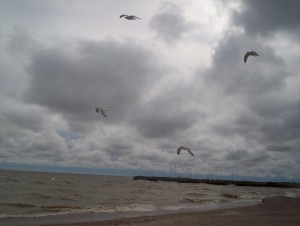Article appeared in the June 23, 2011 issue of the Interlake Spectator…
A new piece of legislation, called the ‘Save Lake Winnipeg Act’, was given royal assent by the Lieutenant Governor late in the day, on Jun. 16.The new act will implement a number of initiatives, ranging from regulations about when, where and how much manure can be spread; regulation of wetlands; a moratorium on permits or leases for peat and peat moss; submission of drinking water and wastewater management plans to the province by municipalities prior to development projects (to ensure health and safety and environmental protection); and the replacement or modification of Winnipeg’s North End Water Pollution Control Centre.
It is all part of a plan to reduce the phosphorus load to the lake by 50 per cent, to return to a pre-1990 state. The recommendations were taken from Manitoba Water Stewardship after about 10 years of studies on the issue. The province is trying to implement all or most of the recommendations that were put forward.
Lake Winnipeg and its watershed continue to receive excessive amounts of phosphorus and nitrogen that puts the very survival of Lake Winnipeg in jeopardy. The large amounts of phosphorous and other contaminants comes from, both, urban and rural areas.
One of the biggest culprits is the aging Water Pollution Control Centre in Winnipeg’s north end. In 2002, 427 million litres of raw sewage was spilled into the Red River from the plant, putting the facility under the microscope. The new act stipulates that the City of Winnipeg must, by December 31, 2014, replace the North End Water Pollution Control Centre, or make modifications to it, to meet strict provincial requirements.
New wastewater treatment requirements state that total concentrations of phosphorous, ammonia, and other substances discharged must not exceed specified limits. In addition, the Province is calling for biological methods of nutrient removal. The use of chemical methods to remove nutrients is now to be minimized. Nutrients are then to be recovered and recycled to the maximum extent possible “through application of the best available technologies”, and bio-solids and wastewater sludge must be reused.
The state of the art facility would cost an estimated $350-400 million, the cost of which would be shared equally by the three levels of government.
Gimli MLA, Peter Bjornson believes the cost is justified, that making sure that changes are made to the Winnipeg facility is important to Lake Winnipeg’s health.
“What does it cost to the lake if we don’t build a facility?” a question Bjornson posed in a recent telephone interview.
“We know how important this project is. We need the city to work with us.”
Official Opposition Leader, Hugh McFadyen, stated in a telephone interview on Tuesday that he agrees with all of the goals of the new legislation, but is “disappointed” with the NDP government for taking so long to bring the Bill forward.
“We were happy, on third reading, to support the act. We agree with all (its) goals…resources need to be put into place,” McFadyen said.
McFadyen is an advocate of a “phosphate first strategy”, which he believes is the main issue for Lake Winnipeg. He also expressed great concern that raw sewage from Winnipeg is still finding its way into the Red River, especially after heavy rains, a situation which he said can be remedied by expanding the waste water system in Winnipeg by repairing piping that carries waste water to the water treatment facility.
It appears that, on the Lake Winnipeg issue at least, both the New Democrats and the Progressive Conservatives are in agreement. Both parties understand that big changes are needed to address the serious threat to the health of one of Manitoba’s biggest lakes.
After much push-and-pull, which spanned several years, the province finally has the blueprint to deal with Lake Winnipeg’s most pressing issue. The ‘Save Lake Winnipeg Act’ is a culmination of numerous long term scientific studies which took place across the vast watershed over a period of more than 10 years.



